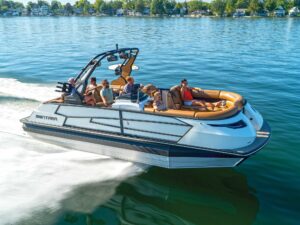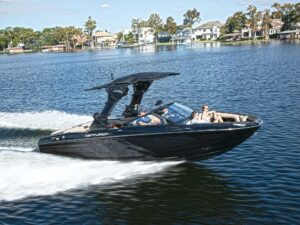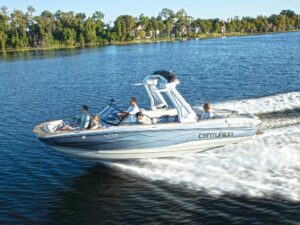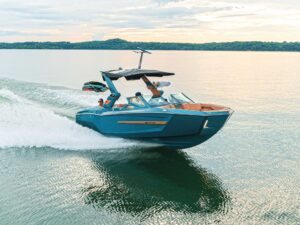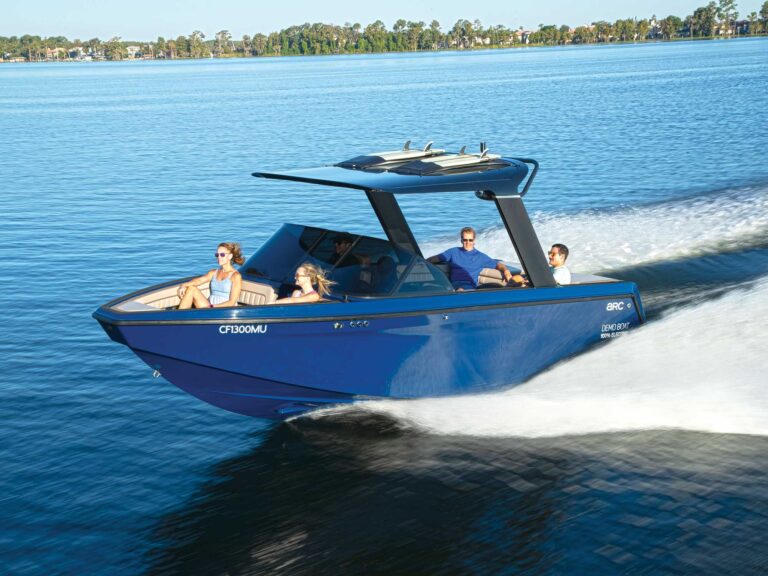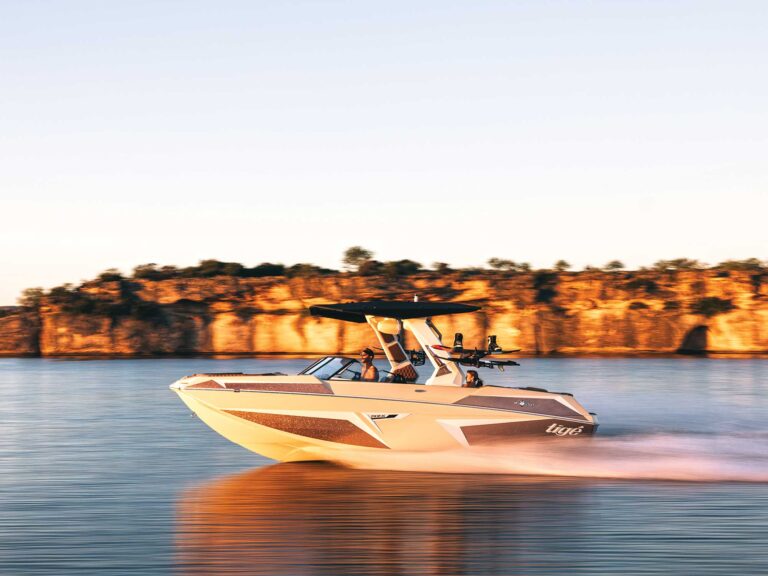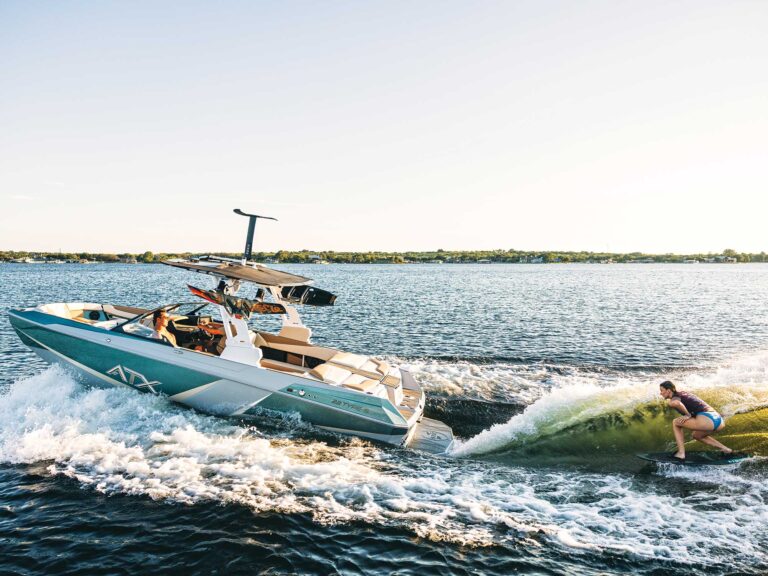
The marine-power landscape is changing quickly, thanks mainly to advancements in motors—especially electric motors, batteries, operating software and charging equipment.
Electric marine propulsion is not new, having been pioneered more than 150 years ago by a Russian inventor, but it’s most prevalent use has been in the form of the electric trolling motor, first introduced in 1934 by Minn Kota for positioning a fishing boat for an accurate cast to cover or trolling along a weed line or drop-off that might hold fish. Today, motors are more powerful, batteries carry more power in lighter lithium packages, and many hull styles of electric-powered boats are available to accommodate the way most boaters play on the water.
This evolving technology raises new questions that boaters must answer when trying to make a power selection. Just as all horses aren’t alike, all horsepower stickers on electric motors aren’t alike. But there is a definite origin for what a horsepower is, and how it is calculated.

What Is Horsepower?
Ironically, the term and calculation for “horsepower” was defined and coined by 1700s inventor James Watt. To give his steam engines credibility and relevancy, he compared their capabilities to that of a horse.
Watt determined one horse could lift 33,000 pounds 1 foot in 1 minute; that 33,000 foot-pounds of work per minute became the standard measurement for machine power. It is the term and formula we still use today.
Watt Is That?
Watt’s success ensured the eponymous naming of another measure of power: The watt is a measure of work done over time. It is equal to one metric joule per second, which is the equivalent of .737 ft-lb per second. A watt is the power it takes to lift 100 grams or 3.6 ounces—say, an average apple—1 meter in 1 second.

Watts to Horsepower
An electric motor’s power capacity is defined in watts. Mathematically, 1 kW (1,000 watts) equals 1.34 horsepower. Some marine-propulsion engineers simply use that conversion formula to define the horsepower of their motor. And some round up that figure, taking a motor’s calculated horsepower of 47 to, say, 60 hp using a vague reference to “equivalent power” or “comparable power.” To be sure, electric motors have far more torque than internal combustion engines, allowing the motor to turn a larger prop, giving a fast hole-shot characteristic of a larger motor, as well as higher speeds at a similar rpm. The same can be said of diesel engines. The increased torque of a diesel power plant, versus a gas mill, is a known characteristic of diesel engines. This characteristic can be factored in when comparing engines because both express power using the same measurement: horsepower. It’s when different ways of expressing power–such as the way some electric engine manufacturers are doing it–that confusion creeps in. If there is no standard starting point for stating power output, then no standard offsets can be applied to fairly compare one engine or motor versus another. Making such fair comparisons is important when deciding how to power a new boat one is buying and when re-powering a boat one already owns.
Power from all engines and motors is also diminished when vertical rotation is converted to horizontal rotation through a gear case. With the latter design, so much power is lost through gear reduction that using the 1 kW equals 1.34 horsepower formula measured at the motor armature, or the IC powerhead, instead of the prop shaft, is far from accurate. (This is why internal-combustion outboards and sterndrives are rated at the prop and inboards are rated at the powerhead.) In The Nature of Boats, author Dave Gerr states that there is a 4 to 6 percent loss of power in gear-case bearings and direction change. Plus, water pickups and pumps in the lower unit have to carry cooling water to the motor, further draining power to the prop. To attain the full advantage of an electric motor’s ponies, the prop has to be directly connected to the motor’s armature, and some motors are not designed to do that efficiently.
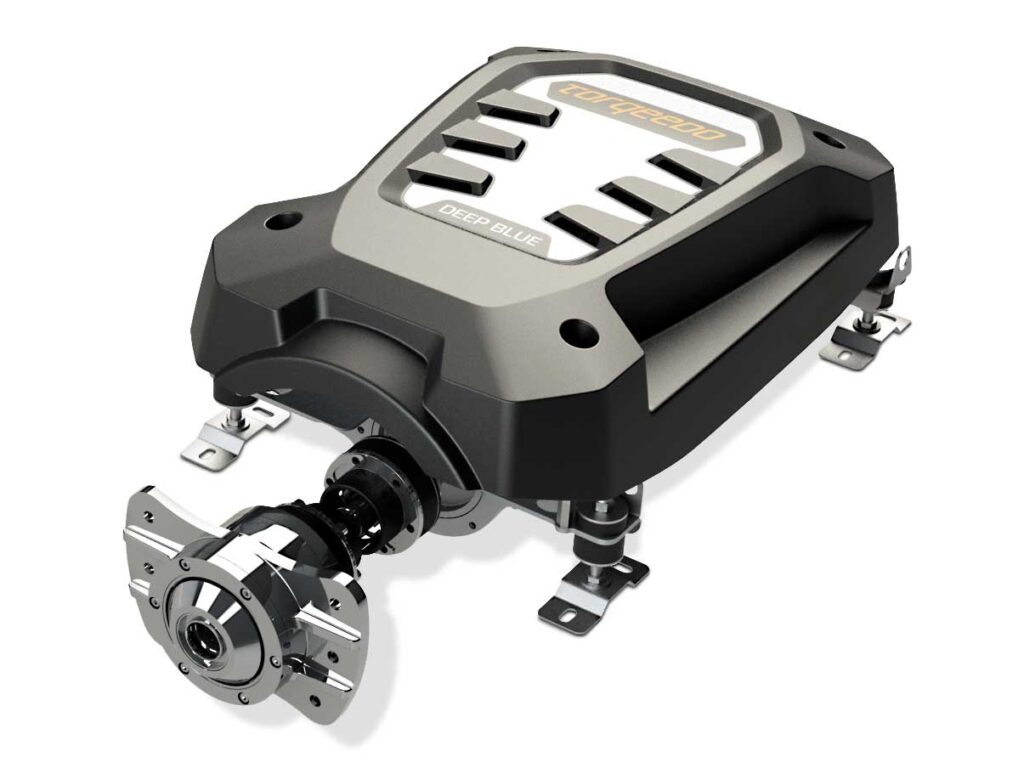
The Way
In boating, there is only one thing that matters in horsepower—the amount of power delivered by the prop to move the boat through water. There is only one way to measure that accurately—with the prop shaft connected to a dynamometer that captures foot-pounds of energy through the power range. “Equivalent horsepower,” on the other hand, is a fabricated term that isn’t a true measurement at all. It’s usually marketing hype, or at best, the platform engineers’ estimate of how one electric motor compares to a comparable internal-combustion engine. The standard for internal-combustion outboard and sterndrive horsepower ratings is to measure that power at the prop shaft. The same must go for electric outboard motors.
Read Next: The Perks of Portable Electric Outboards

Shopping for Answers
When shopping for electric propulsion, the first mystery to unravel is finding out the true horsepower at the prop shaft. Questions of acceleration, top speed, and range are variables that are determined by motor design and its integration into different hull styles, weights, loads, and battery capacity. Motor designs bring vastly differing advantages and liabilities too.

